- A tale of two SUVs, both offering plenty of cargo space and family-friendly features.
- The Honda Pilot and Toyota Highlander differ in terms of powertrains and fuel efficiency.
- How do these two family-friendly SUVs compare? Let's explore.
2025 Honda Pilot vs. Toyota Highlander: Which Family Hauler Should You Buy?
A mom's verdict on which SUV is truly best for the whole family
Picking between Toyota and Honda for your family-hauling SUV has been a difficult task for a while now. The Pilot is the brand’s steady three-row SUV that's popular with families and more rugged than ever. The Highlander, which is softer and more road-focused, competes for a similar audience and at a comparable price. Both have been on the market for decades and are in their fourth generation.
So how do you pick between these well-established family SUVs? Let’s take a look at the statistics and see how they match up, mano a mano.
2025 Toyota HIghlander
Powertrain/drivertrain/mpg
Between the Pilot and the Highlander, the Pilot has more power on paper. Equipped with a 3.5-liter V6 making 285 horsepower and 262 lb-ft of torque, the Honda Pilot has a 10-speed automatic transmission that drives the front wheels as standard. All-wheel drive is optional unless you choose the TrailSport, Elite or Black Edition trim.
The Highlander’s advantage is its fuel efficiency. Powered by a 265-horsepower turbocharged four-cylinder engine, the Highlander includes front-wheel drive as standard, but all-wheel drive is available on all trims. The EPA says Toyota’s SUV is good for 24 mpg combined with all-wheel drive and 25 mpg with front-wheel drive. On Edmunds’ real-world evaluation route, we saw even better than that: 26.6 mpg.
In contrast, the Pilot ranges from 20 mpg to 22 mpg depending on trim and whether it’s front-wheel or all-wheel drive. Of course, if spending less time at the pump is most important to you, you might want to steer toward the Highlander Hybrid or Grand Highlander Hybrid instead. For instance, the Highlander Hybrid gets up to 36 mpg combined (as long as you drive with a light right foot).
With either SUV, you won’t suffer from sluggish acceleration. Perhaps surprisingly, the Highlander’s inline-four engine holds its own against the Pilot when merging onto highways or passing. In our testing, they both managed the 0-60 mph sprint in around 7.5 seconds, with a slight edge going to the Toyota.
2025 Honda Pilot
Cargo space
When you have kids, storage space is key. You need someplace safe to stash your phone, like everyone else, but also for grocery bags, purses, wipes, extra napkins, sports equipment for older kids, and you can't forget snacks.
The Pilot boasts a decent 18.6 cubic feet behind the third row and 48.5 cubes with the rear seats folded down. Its 50/50-split third-row seats make it easy to accommodate goodies of all sizes, including camping equipment for a family of four. Even pets can fit with room to spare behind the second row, and the floor height is just right for loading items without breaking your back.
With only 16 cubic feet, the Highlander is not as generous as the Pilot for cargo; it is slightly less roomy behind the second row with 48.4 cubic feet. Storage options for small items are plentiful, though, with nicely sized pockets and cupholders. Two convenient shelves are built into the dash for quick-grab items like a spare pacifier or Matchbox cars.
But my mom brain leans me toward the Pilot here. One thing I really like about the Honda Pilot is the cupholders. There’s one for every passenger, which is important for avoiding squabbles in the back seats. They’re large enough to fit a 40-ounce bottle, and with the movement away from single-use plastics and toward reusable water bottles, that makes a lot of sense. Drink from your trendy Stanley all you want.
2025 Toyota Highlander
Second- and third-row space
Headroom in the Pilot is comfortable at 40.5 inches/40.2 inches/39.3 inches for the first, second and third rows, respectively. (TrailSport and higher trims lose nearly 1.5 inches off the top.) Without a moonroof, the Highlander is better for taller drivers and offers a generous 41.2 inches; that number shrinks to 38.4 inches with a panoramic sunroof. However, the Pilot feels more comfortable inside due to nearly 3 more inches of shoulder room and more than an inch extra for your hips.
For seat comfort, the Pilot and Highlander are about equal. Personally, I don’t like the way Toyota’s headrests seem to push my head forward, and while the Pilot's aren't perfect, they present a better compromise.
Only small children will be happy in the third row in both the Pilot and the Highlander, but the Pilot offers a notable 4 inches more legroom back there. Third-row seats are notoriously less comfortable than other parts of the cabin across the segment, so kids could get a little bothered after sitting back there for long periods. Anyone older than your toddler isn't going to like the third row either — we wouldn't even recommend trying.
2025 Toyota Highlander
Technology
A few years ago, Toyota gave its infotainment system a massive upgrade, and the Highlander benefits from the results. An adequate 8-inch screen is standard, but the 12.3-inch touchscreen is the star in the lineup. The software is intuitive and easy to use, and the voice controls are responsive as well.
Honda’s infotainment setup is usable and simple but not nearly as well organized as Toyota’s. The largest screen is 9 inches, and only one USB-C port is available, while the others are all the older and slower USB-A ports. A wireless charging pad is convenient and works better than most without overheating your phone.
Every Highlander comes standard with a generous suite of driver assist technology, including important features like pedestrian detection, lane departure alert with steering assist and lane keeping assistance, and adaptive cruise control. Even blind-spot monitoring is standard, which I appreciate in a neighborhood of teen drivers. Honda matches the Toyota’s driver assist set very closely, so both brands impress when it comes to prioritizing safety tech.
Adventure readiness
You might not think of a crossover as a go-anywhere kind of vehicle. The truth is that most Pilots and Highlanders will never touch dirt of any kind unless they’re pulling into a local campground. That doesn’t mean these SUVs can’t wheel a bit outside of your comfort zone, however, and Honda addresses that urge with its TrailSport trim.
Pilot TrailSport models include all-wheel drive, 18-inch wheels wrapped in all-terrain tires, an off-road-tuned suspension, more ground clearance than the base model, skid plates to protect the body from rocky terrain, and a surround-view camera system to help navigate tricky spots. There are also off-road recovery hooks and a trailer hitch so you can load up the camper or boat and head to the lake for the weekend. A hidden gem is the household-style power outlet in the second row, great for charging Bluetooth speakers or powering up a coffee maker so you can get through that family hike.
Toyota’s Highlander has a towing advantage at 5,000 pounds in either the front- or all-wheel-drive version, and the Pilot can do only 3,500 pounds with front-wheel drive (yet matches Toyota’s 5,000 pounds with all-wheel drive). The Highlander isn’t marketed with an “off-roading” spec, but every model is built with 8 inches of ground clearance, while the Pilot starts with 7.3 inches. Let me tell you, you can’t get too deep into the forest with that, and the 8.3-inch upgrade in TrailSport models is worth it if you want to venture off the pavement.
Verdict
The Pilot is the better choice for adventurous families, for sure, and the comfort factor is higher across the board. However, the Highlander is more efficient and, thanks to its smaller footprint, easier to live with and maneuver with a slight edge in in-car tech too.
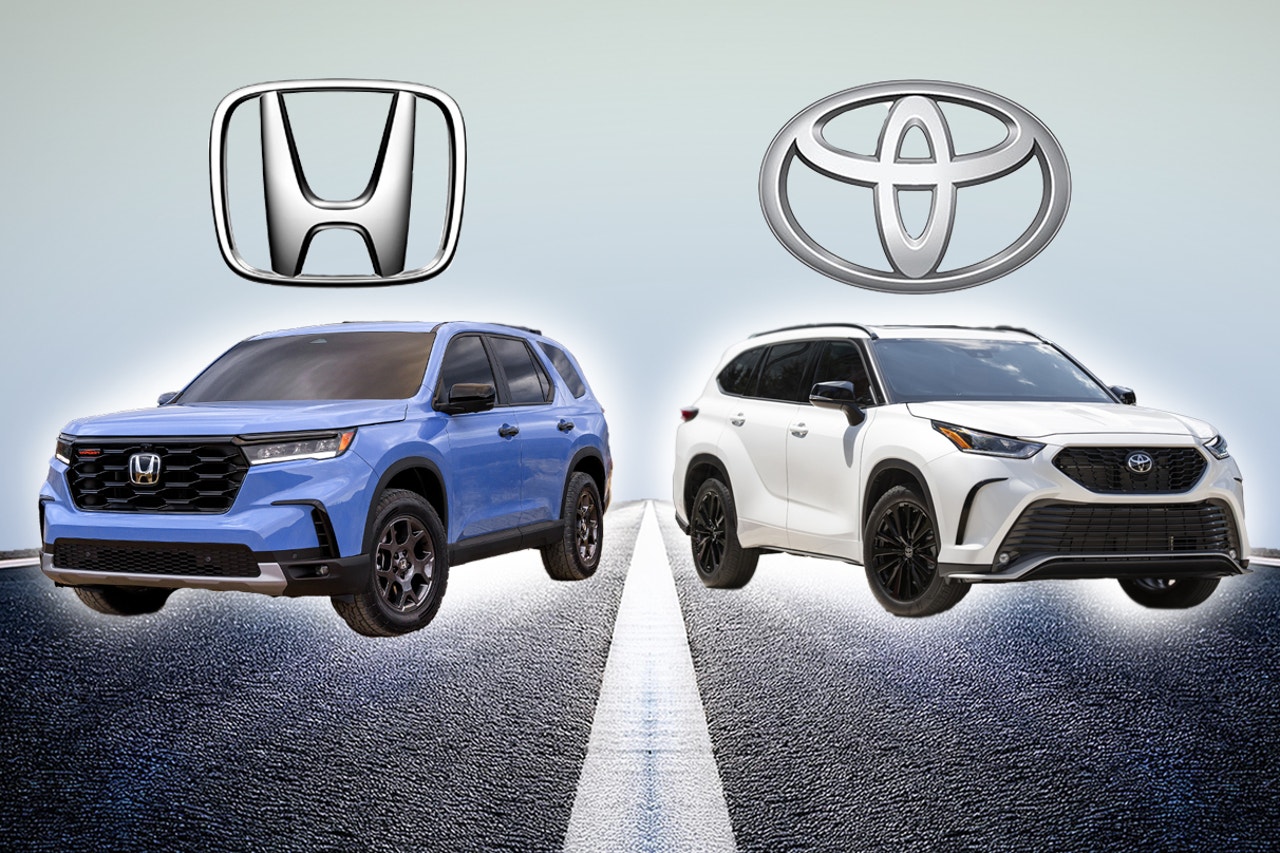





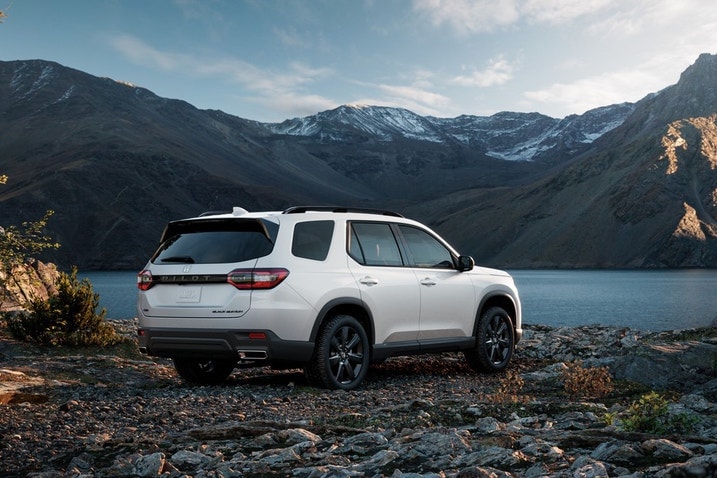
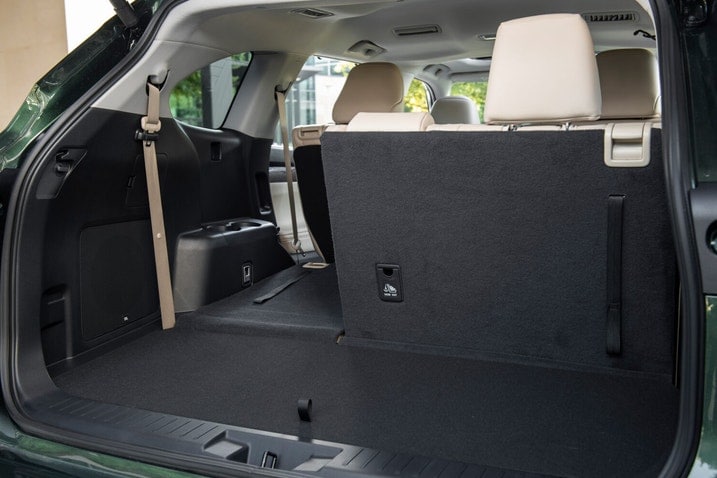
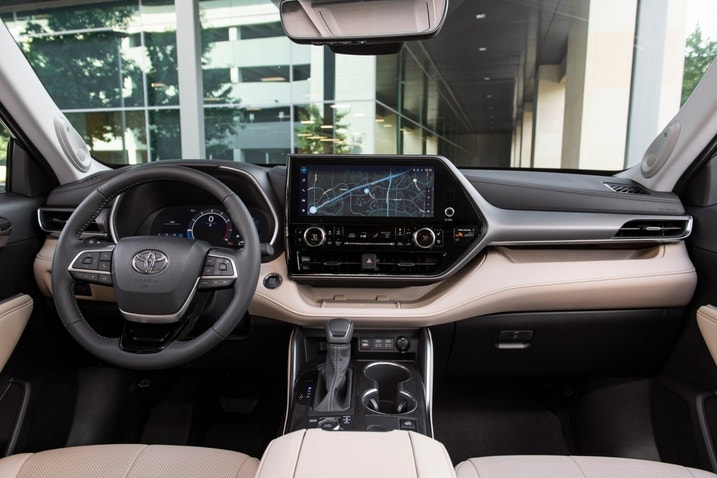
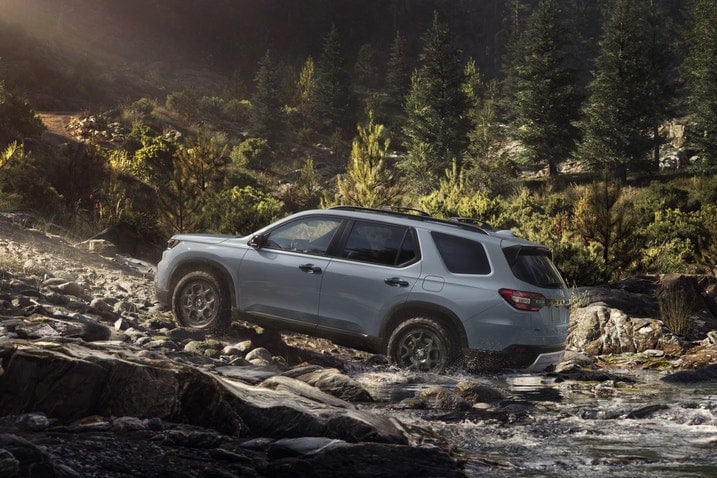
 by
by  edited by
edited by